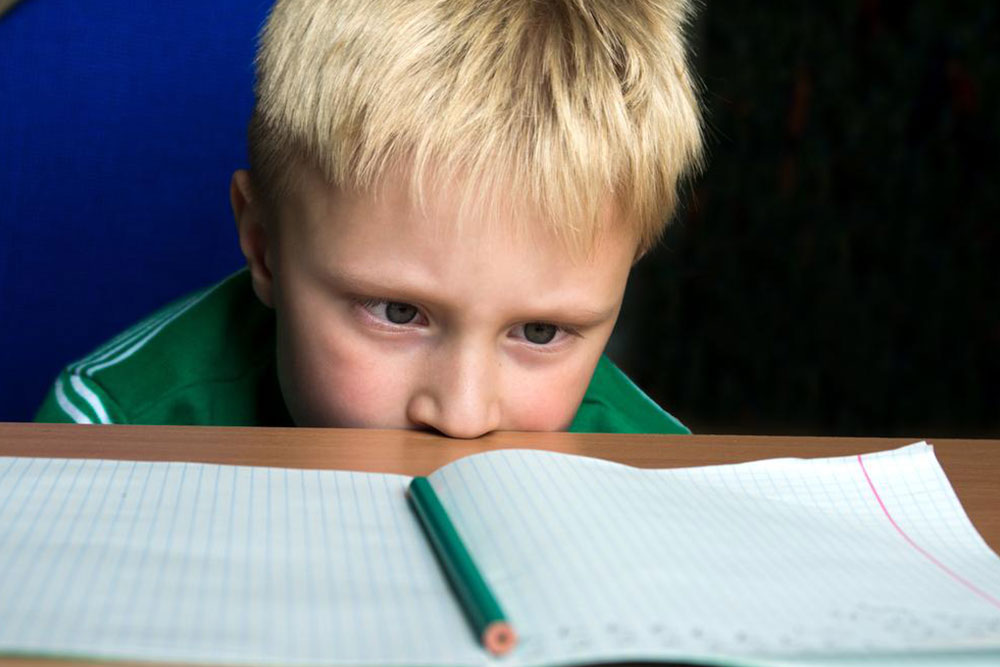How To Identify Attention Deficit Disorder In Children
How to identify attention deficit disorder in children
Kids are associated with child play. They don’t follow instructions, do not sit silently or still in a place for too long, fidgety etc. being occasionally forgetful of completing homework, Some of these kids may be manageable and some will be labelled as troublemakers. If your kid is demonstrating such extremes behavior in a way that they are unmanageable, you should consider to look up to finding symptoms of ADHD in your child before someone criticizes your parenting skills.

The symptoms and signs of this mental disorder typically show up by the age of 7-8 years. However, this is the age when a child grows up with a maturity rate varying for each kid. Hence, it is difficult to differentiate between ADD and a “regular” kid’s behavior. Hence, depending on their personality, temperament, and energy levels of the kids and your observations/suspects based on the signs and symptoms of ADD, it is better to get an opinion from an expert on the appropriate behavior for the child’s age. If left unidentified, it may remain dormant and then show-up when they grow up into adolescence and it gets noticed with their characteristic behavior like inability to concentrate, stay attentive on a given task etc. Although an out-of-control kid who is always a troublemaker is the first picture you get in mind when you talk about a child suffering with ADD, which may not be the case always. There are three primary characteristics of ADD or ADHD which occur with any one being prominent or in combination. They are impulsivity, hyperactivity and inattention.
- Kids who cannot pay attention, are not impulsive or hyperactive. These children may seem to be more silent. Such kids mostly tend to get overlooked as they do not demonstrate disruptive behavior but may suffer from their inability to cope up with their studies or lack of concentration in the things they do. They are usually blamed for being underperformers in school, lazy or not playing the games by the rules, spacey, unmotivated etc.
- Kids who are able to pay attention but are hyperactive and impulsive. Such children demonstrate too much focus on a particular task and have trouble with multitasking or in shifting their attention to something else. Such kids may not be able to comprehend different subjects when all taught in a stretch and score poorly in particular subjects only. Also, they can keep their focus only when they are enjoying their work, they cannot stay attentive if the activity is boring.
- Children who are unable to stay attentive and are hyperactive and impulsive. This is the most common form of ADHD. These kids will be unable to sit still or stay quiet and often blamed to be disobedient, disruptive and troublemaking.
It is good to identifying the signs and picking up your kid for treatment at the earliest and avoid it from manifesting into adulthood. But at the same time, it is very important to take the judgement correctly with the help of a mental health professional. Some non-ADD characteristics that can be mistaken for a mental disorder are:
- Disabilities related to normal learning like reading, writing, motor skills or picking up a language. Every child will have his/her own pace of growing up.
- The behavior may also be affected due to some major life events or experiences of mental trauma like death of a loved one etc.
- Issues arising from psychological disorders like anxiety, depression, and bipolar disorder.
- Affected by certain behavioral disorders like conduct disorder or oppositional defiant disorder.
- Problems arising due to some medical conditions like thyroid, neurological conditions, epilepsy, and sleep-related disorders.
Although ADD is presumed to be challenge, it has its positive effects in children as well.
- Since most of these kids are daydreamers, they can be extremely creative, imaginative or possess artistic skills.
- Their tendency to be easily distracted may sometimes help them to notice things or details overlooked by others.
- Since these kids do not settle down easily, they tend to be more flexible when a lot of options are given making them open to different ideas.
- These kids are always enthusiastic and spontaneous and demonstrate lively personalities who are often considered to be fun with their high levels of energy and drive.



